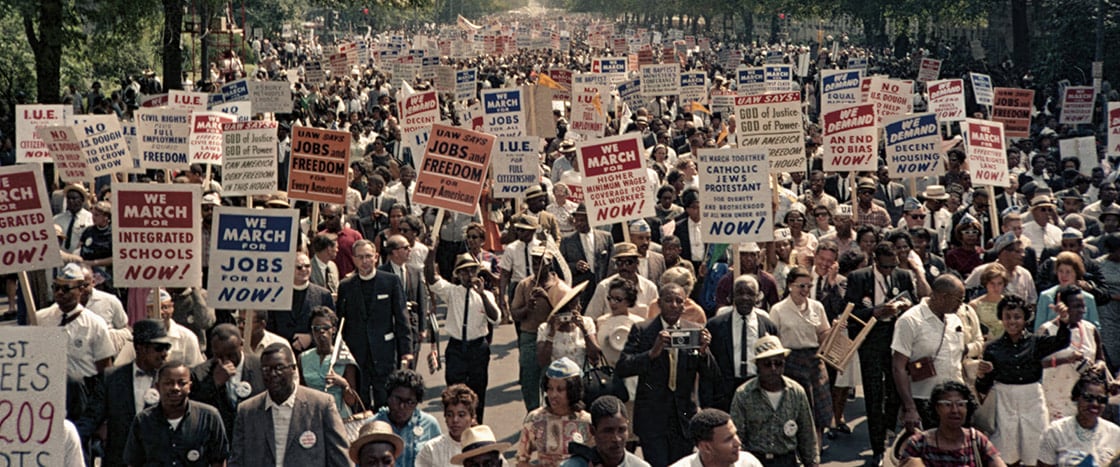Courtesy of Tom Ellison
Tom Ellison, around 1962
Twelve-year-old Tom Ellison stepped off the bus, his heart humming with excitement. Finally, he was here: Washington, D.C.!
It was August 28, 1963. For more than two days, Tom had been on a bus traveling from his Southern hometown of Birmingham, Alabama. Across the country, thousands of people had been making similar journeys—by train, by plane, by car, by foot.
This huge crowd was streaming into the nation’s capital to demand equality for Black Americans. For nearly 200 years, lawmakers in the U.S. had put in place racist laws that robbed Black people of basic rights. Discrimination and violence against Black Americans were widespread, especially in the South.
Now people from every corner of the country were coming together to declare that enough was enough. They were going to march together for about a mile, from the Washington Monument to the Lincoln Memorial, where leaders would give speeches calling for change. This peaceful protest was known as the March on Washington.
As Tom got ready to march, he could feel a ripple of hope running through the crowd. “I remember the joy on the faces of the people who felt that they were going to accomplish something that day,” he says.
Already, it was clear: This was an event that would change history.
Twelve-year-old Tom Ellison stepped off the bus. His heart was humming with excitement. Finally, he was here. Washington, D.C.!
It was August 28, 1963. For more than two days, Tom had been traveling on a bus. His trip started in his Southern hometown of Birmingham, Alabama. Across the country, thousands of people had been making similar journeys. They came by train, by plane, by car, and by foot.
This huge crowd was streaming into the nation’s capital. They came to demand equality for Black Americans. For nearly 200 years, U.S. lawmakers had created racist laws. These laws robbed Black people of basic rights. Discrimination and violence against Black Americans were common—especially in the South.
Now people from all parts of the country were coming together. They came to say that enough was enough. They were going to march together for about a mile, from the Washington Monument to the Lincoln Memorial. At the memorial, leaders would give speeches calling for change. This peaceful protest was known as the March on Washington.
Tom got ready to march. He felt a sense of hope in the crowd. “I remember the joy on the faces of the people who felt that they were going to accomplish something that day,” he says.
Already, it was clear. This was an event that would change history.


